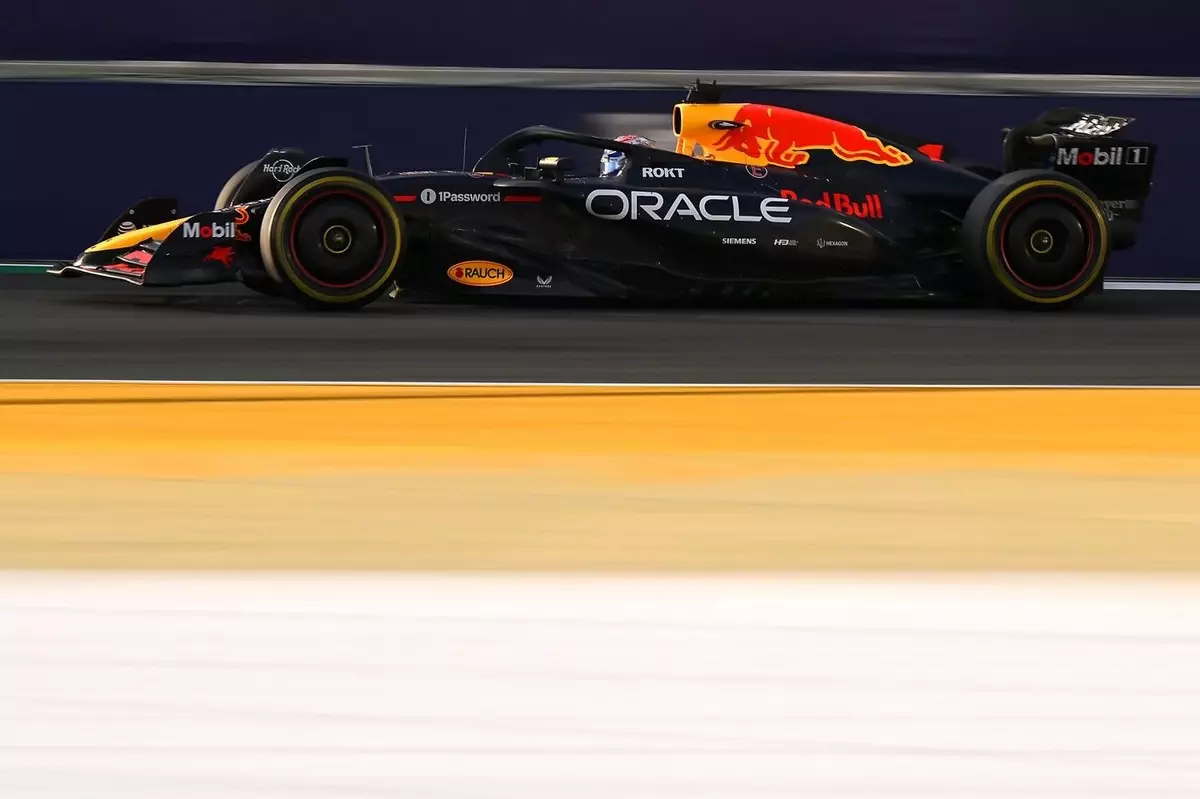In recent years, the world of Formula 1 has become a theater of dramatic shifts, not least illustrated by a rising tension within Red Bull Racing. As of late, the team, who once reigned supreme on the circuits, seems to be grappling with issues that raise questions about its future—issues that have the potential to define the current season. While on the surface, the competitive spirit around the team appears unscathed, the internal struggles might be deeper than they let on. The juxtaposition of Red Bull’s outward confidence against emergent whispers of unrest gives rise to a complicated narrative, inviting scrutiny into both performance metrics and underlying team dynamics.
Behind the Curtain: Performance Anomalies and Team Dynamics
To understand the brewing storm within Red Bull, one must first dissect recent race performances, particularly those of Max Verstappen and his teammate, Yuki Tsunoda. In a recent event in Jeddah, both drivers failed to deliver their usual stellar performances, finishing far from expectation—ninth and tenth on the timing sheets. However, what is alarmingly evident is that emotions run high within the team management. High-ranking officials, such as team principal Christian Horner, have publicly downplayed the significance of “crisis meetings” that followed these underwhelming showings. This denial seems less like resilience and more like a frantic attempt to maintain a façade as internal issues continue to mount.
The disconnect between simulation results and on-track performance has become a critical talking point. Literally, Red Bull appears stuck in a vicious cycle of hope and disappointment. Even when Verstappen, one of the sport’s elite drivers, unexpectedly achieves a good result, it almost becomes a double-edged sword; it highlights just how inconsistent their car is and adds another layer to their frustrations. The recognition that the team’s performance is erratic raises eyebrows throughout the paddock, prompting rival teams to wonder whether they can capitalize on Red Bull’s vulnerabilities.
The Winds of Change: Technological Challenges Ahead
One cannot ignore the spatial context of Red Bull’s ongoing technical struggles. Reports of the team’s wind tunnel being a “relic of the Cold War” signal more than just a humorous jab; they encapsulate an existential challenge facing Red Bull Racing. The facility once deployed to foster innovation is now viewed as an inefficiency, not to mention outdated by modern standards. In F1, ticks of a second can determine race outcomes, and when a team cannot replicate their designs effectively via wind tunnel testing, the ramifications become brutal.
Horner has cited external factors like variable weather as key reasons for discrepancies in car performance. However, using externalities as scapegoats merely underscores a deeper-seated issue—the struggle for meaningful consistency in aerodynamic research. It’s clear that the team has recognized these technological deficiencies, promising upgrades and new tools on the horizon. Yet, as history has shown in the realm of competitive racing, promises without results can be empty words, quickly forgotten amidst the roaring engines and relentless competition.
Uncompromising Performance Pressure: The Driver’s Perspective
Drivers like Verstappen are a team’s most valuable assets, yet they are also human and subject to frustration and impatience. With the gap between performance and potential widening, it’s clearly become an emotional rollercoaster for these athletes who thrive on success but find themselves uninspired by inconsistent car behavior. Their expectations are invariably high—after all, they compete in the sport’s apex, where losing ground is almost anathema. If Verstappen feels pressure to achieve amidst such vacillation, one wonders: will this pressure translate into heightened tensions within the team?
Moreover, with every disappointing race, fan expectations and scrutiny only amplify, placing additional pressure on the driver. The ongoing speculation requires not just swift communication from the team but also decisive action that delivers results. Horizontal lines of clarity must be established between technical teams and drivers to ensure everyone remains aligned in the pursuit of excellence. If not, the environment may devolve into uncertainty and dissent, breeding complacency at a time when urgency is paramount.
Looking Forward: The Path Ahead for Red Bull Racing
As Red Bull navigates these turbulent waters, all eyes remain firmly placed on their upcoming developments and strategic decisions for future races. The team must come together as a cohesive unit to tackle these growing concerns—both on the track and behind the scenes. The clock is ticking, and while the team has maintained its bravado of “Crisis? What Crisis?”, the reality is that substantial work lies ahead to re-establish themselves as the dominant force they once were. In a sport defined by rapid evolution, complacency is the enemy, and the renewal of Red Bull Racing’s promise may hinge on their ability to transform challenges into triumphs.

